29 5.7 Summary Questions
1. Assign a crown class to each of the following trees.

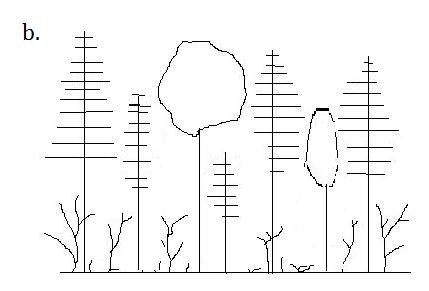
2. Where on this tree should the live crown be measured?

3. Determine LCR for each tree illustrated.
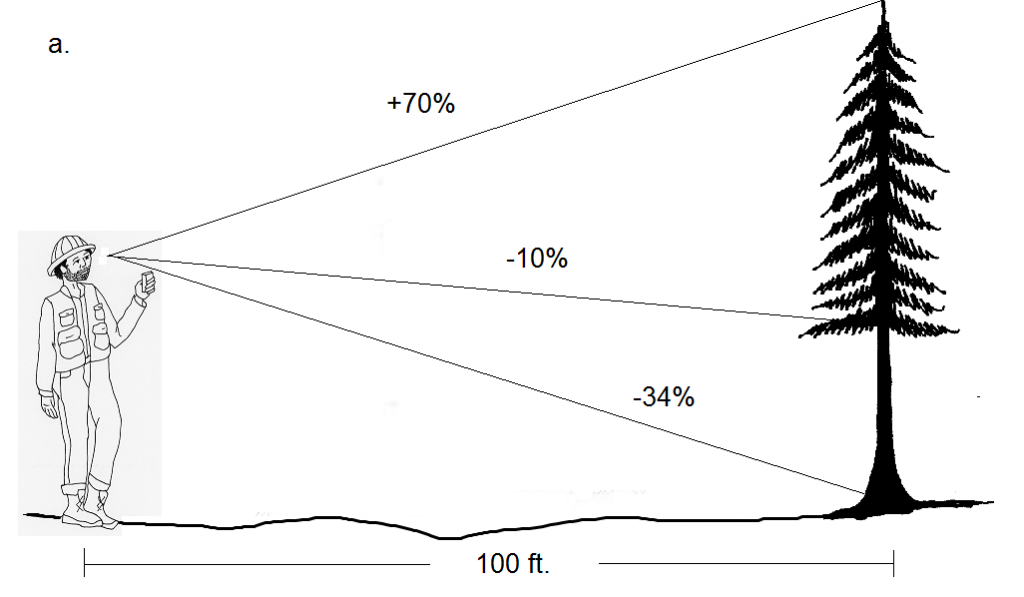
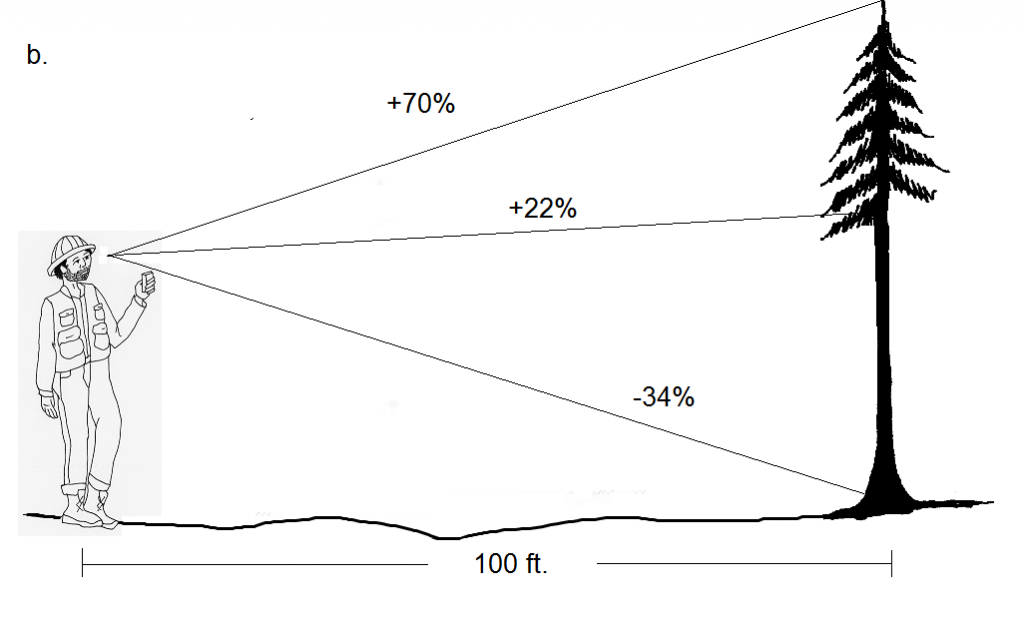
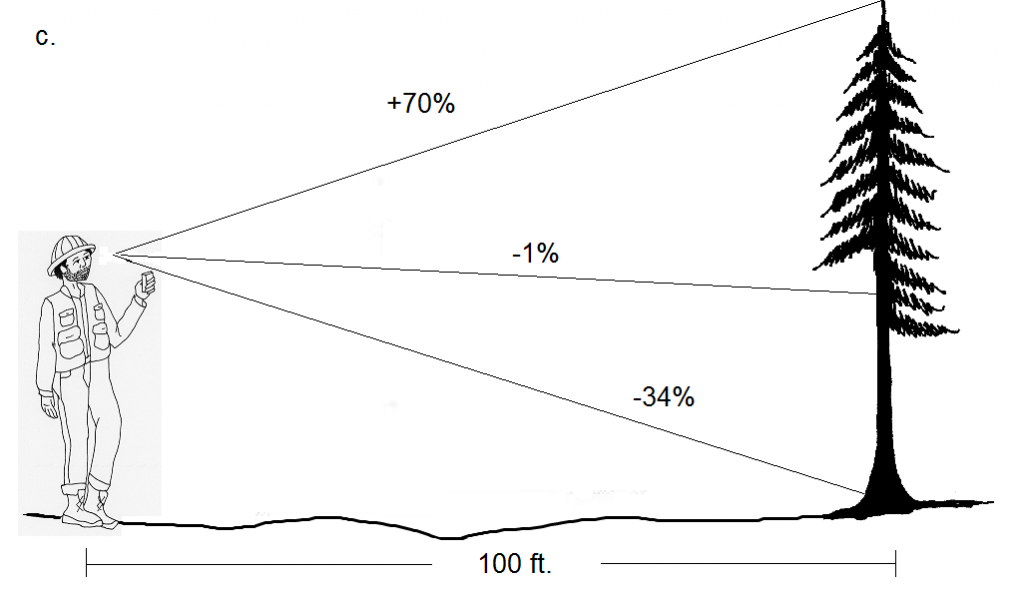
Answers to Summary Questions
1. Trees on the ends of the illustrations are hard to determine, given that it is not known what is on the other side of them. Assume there are trees beyond what is shown, so use crown size as a partial indicator of the amount of light they are receiving. Position in the crown is key. The following are what I would assign, but I think the starred one (*) is borderline, and could be assigned the next higher crown class.
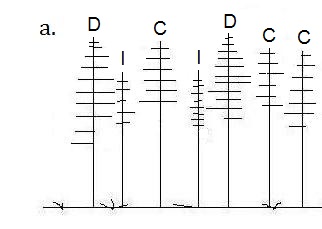
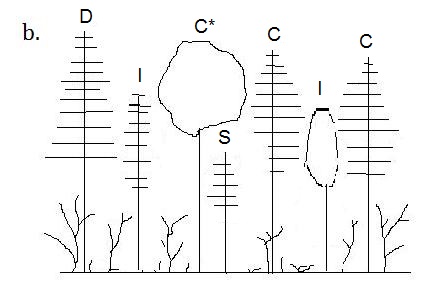
2. The lower crown has branches only on one side. So the base of the crown would be measured at a point approximately halfway between these branches.
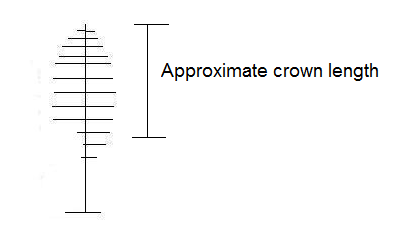
3. [latex]\text{Live Crown Ratio=}\left( {\frac{{\text{Length of crown}}}{{\text{Total tree height}}}} \right)\left( {100} \right)[/latex]
In these examples, total tree height is the same for each tree. At a horizontal distance of 100 feet, tree height is simply the two percent slope measurements added together. 70+34 = 104 feet.

Tree a: [latex]\text{Live Crown Ratio=}\left( {\frac{{\text{70+10}}}{{\text{70+34}}}} \right)\left( {100} \right)[/latex] ≈ 77%

Tree b: [latex]\text{Live Crown Ratio=}\left( {\frac{{\text{70-22}}}{{\text{104}}}} \right)\left( {100} \right)[/latex] ≈46%

Tree c: [latex]\text{Live Crown Ratio=}\left( {\frac{{\text{70+1}}}{{\text{104}}}} \right)\left( {100} \right)[/latex] ≈68%

